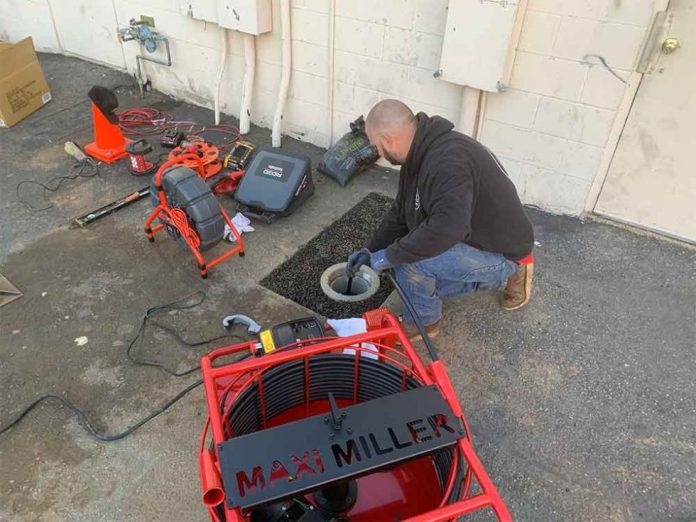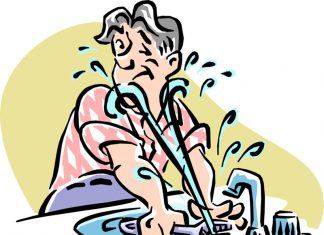Plumbing descaling might not grab headlines like innovative smart home technologies or eco-friendly water solutions, yet it plays a pivotal role in maintaining a household’s water system’s health and efficiency. This unsung hero of home maintenance ensures that water flows smoothly, appliances operate efficiently, and fixtures remain free from the clutches of mineral buildup. The significance of descaling becomes evident through its ability to prevent reduced water pressure, eliminate strange noises in pipes, enhance water heating efficiency, control water bills, and avoid visible mineral deposits on fixtures.
Each of these signs clearly indicates that descaling is beneficial and necessary for the well-being of your plumbing system. Diving deeper, we’ll dissect each symptom, from the tell-tale reduction in water pressure signaling a cry for help from within your pipes to the peculiar symphony of noises that can plague your plumbing system. We’ll explore how these issues affect not only your daily convenience but also the long-term health of your plumbing infrastructure.
The following sections will delve into the causes, implications, and solutions for each sign, offering a comprehensive guide to recognizing and addressing the need for descaling in your plumbing system.
What is descaling in plumbing?
Descaling in plumbing is the essential process of removing mineral buildup, notably calcium and magnesium, from the interiors of pipes, fixtures, and water heating systems. This buildup, a common challenge in areas with hard water, can significantly constrict water flow and impair the efficiency of appliances over time. The experts at Pipe Restoration Solutions say that the descaling process can be executed through chemical or mechanical methods, each aiming to effectively eliminate these mineral deposits.
By undertaking descaling, homeowners can ensure optimal water flow and extend the lifespan of their plumbing infrastructure, thereby maintaining consistent water pressure and temperature. This not only enhances the functionality of the plumbing system but also contributes to a more efficient and reliable water service, making descaling a critical maintenance task for preserving the health of one’s plumbing.
Sign 1: Reduced Water Pressure
A telltale indicator that your plumbing may require descaling is reduced water pressure. This condition often stems from the accumulation of mineral deposits within the pipes, a common occurrence in areas supplied with hard water. Over time, calcium and magnesium, prevalent in hard water, crystallize and adhere to the inner surfaces of plumbing, effectively narrowing the channels through which water flows.
This constriction not only impedes the efficiency of water delivery but can also herald more severe plumbing issues if not promptly addressed. Experiencing a drop in water pressure is a clear sign that descaling might be necessary to rejuvenate your plumbing system, ensuring optimal performance and a consistent water supply.
Mineral buildup in pipes reduces flow
The primary culprit for reduced water pressure is mineral buildup within the plumbing. As water, rich in calcium and magnesium, flows through pipes, it leaves behind mineral deposits that cling to the inner surfaces. This accumulation gradually narrows the passageways, significantly diminishing the flow of water.
The restriction not only affects water delivery efficiency but can also lead to increased strain on your plumbing system.
Common in older or hard water areas
Notably, this issue is more prevalent in older plumbing systems and locales characterized by hard water. In older systems, the effects of years-long mineral deposition can result in substantial narrowing of pipes, exacerbating flow issues. Similarly, areas with hard water see a quicker buildup due to the higher concentration of dissolved minerals.
These conditions highlight the essential nature of regular descaling, ensuring that water pressure is maintained and plumbing remains in optimal condition.
Sign 2: Strange Noises in Pipes
Strange noises emanating from your pipes are a significant indicator that descaling might be necessary. These sounds, which can vary from squealing to banging, often result from the restricted flow of water through pipes narrowed by mineral buildup. Such auditory cues are not merely disruptive; they signal the challenges and turbulence water faces as it moves through your plumbing’s constrained pathways.
Typically more pronounced when multiple water fixtures are used simultaneously, these noises highlight the sections of your plumbing most impacted by mineral deposits. Proactively addressing these sounds through descaling can not only restore peace and quiet to your home but also enhance the efficiency of water flow and safeguard your plumbing system against further damage.
Squealing or banging from restricted flow
Squealing or banging noises within a plumbing system point to a significant issue: restricted flow caused by mineral buildup. These sounds are the result of water navigating through constricted pipes, where the reduced space creates turbulence and fluctuating pressure levels. Squealing typically manifests as water is forced through these narrow passages, while banging—often referred to as water hammer—occurs when the flow is abruptly stopped, sending a shockwave through the system.
Often heard when using multiple fixtures
The occurrence of these noises is particularly prevalent when multiple fixtures are in operation. This increased demand on the plumbing system highlights the restrictions, causing the noises to become more pronounced and noticeable. It’s a clear indication that the system is struggling to accommodate the water flow, emphasizing the need for descaling to ensure smooth operation and prevent potential damage to the plumbing infrastructure.
Sign 3: Water Takes Longer to Heat
Observing that water takes longer to heat is an often-overlooked indication that descaling might be necessary for your plumbing system. This heating delay is primarily attributed to scale buildup inside water heaters, affecting both tank and tankless models. Mineral deposits form an insulating layer on the heating elements, significantly reducing the system’s ability to efficiently transfer heat to the water.
As a result, the heater must expend more energy and operate for longer periods to reach the set temperature, leading to higher energy bills and potential strain on your heating system. This inefficiency not only impacts your immediate utility costs but also suggests a broader issue of mineral accumulation within your plumbing. Promptly addressing this through descaling can enhance heating efficiency, lower operational costs, and extend the service life of your water heating appliances.
Scale insulates water heaters, reducing efficiency
Scale buildup acts as an unwelcome insulator within water heaters, critically reducing their efficiency. Mineral deposits, particularly from hard water, accumulate on the heating elements and the interior surfaces, creating a thermal barrier. This barrier significantly impedes heat transfer, necessitating that the heater expend more energy and time to reach the set water temperature.
The result is not just increased energy consumption but also added strain on the heating system, which can hasten wear and elevate maintenance costs.
Noticeable in both tank and tankless systems
The challenge of diminished heating efficiency due to scale is a common issue across both tank and tankless water heating systems. Irrespective of the type of water heater your home employs, the risk of mineral buildup and its consequent impact on performance is a shared concern. This widespread issue highlights the critical need for routine descaling, ensuring optimal operation and longevity for water heaters of any model, safeguarding against inefficiency and potential system degradation.
Sign 4: Increased Water Bills
A sudden surge in water bills is a clear indicator of underlying inefficiencies in your plumbing system, hinting that descaling may be overdue. This increase often stems from the extra effort required by water pumps and heaters to maintain adequate flow and temperature in the face of mineral buildup constricting the pipes. Such inefficiencies not only place additional strain on your plumbing and heating systems but also lead to a spike in energy consumption.
The connection between increased utility costs and the necessity for descaling is particularly apparent when household water usage patterns have not significantly changed. Proactively addressing this through descaling can enhance the efficiency of water circulation and heating within your home, which may result in reduced utility expenses and contribute to the prolonged health of your plumbing and water heating systems.
Constricted pipes require pumps to work harder
Constricted pipes, resulting from mineral buildup, necessitate that water pumps exert additional effort. This requirement for increased force to maintain water flow through the narrowed channels places significant strain on the pumps. The consequence is not just heightened energy consumption but also an escalated risk of mechanical wear, potentially leading to premature pump failures.
Higher energy use for heating water
In a parallel vein, scale accumulation within water heaters translates to higher energy use for heating water. The insulating properties of these mineral deposits force heating elements to work overtime, consuming more energy to achieve the same level of heating. This inefficiency not only inflates your energy bills but also imposes additional stress on your water heating system, possibly curtailing its operational lifespan and increasing the frequency of maintenance or replacement needs.
Sign 5: Visible Mineral Deposits
The emergence of visible mineral deposits on fixtures like faucets, showerheads, and heating elements signals a pressing need for descaling. These deposits, which can appear as white, green, or brown crusty layers, are tangible indicators of the hard water’s impact on your plumbing system. Beyond detracting from the aesthetic appeal of your fixtures, these mineral accumulations hint at a deeper issue—significant buildup within your pipes and appliances that can compromise water flow and appliance efficiency.
Proactively addressing these visible signs through descaling can halt further mineral accumulation, safeguarding the operational efficiency and visual appeal of your plumbing and water heating systems.
On faucets, showerheads, and heating elements
Mineral deposits tend to accumulate on faucets, showerheads, and heating elements, where water routinely makes contact with surfaces. These areas act as a visual gauge for the level of mineral buildup within the entire plumbing system, revealing the impact of hard water through tangible evidence. Identifying these deposits on such fixtures and appliances is crucial for understanding the extent to which hard water may be affecting your home’s plumbing health.
White, green, or brown crusty buildup
The presence of white, green, or brown crusty buildup is a direct manifestation of mineral deposits, primarily composed of calcium and magnesium from hard water. The color and texture of these deposits can offer clues about the specific minerals present in your water supply. This crusty accumulation not only compromises the aesthetic appeal of your fixtures but also serves as a warning sign of potential efficiency losses and damage within your plumbing and heating systems, highlighting the need for proactive descaling measures.
Why is descaling important?
The experts at Pipe Restoration Solutions say that Descaling is vital for preserving the health and efficiency of plumbing systems. It effectively removes mineral buildup, preventing the corrosion and blockages that can cause leaks and extensive damage. Beyond preventing physical damage, descaling ensures that water heaters and pumps work as intended, optimizing energy use and prolonging their operational life.
Additionally, it maintains consistent water pressure and temperature, crucial for the system’s overall performance. Regular descaling acts not merely as a maintenance routine but as a preventative strategy, safeguarding your home’s water infrastructure against unforeseen repairs and promoting the durability of plumbing and water-utilizing appliances.
Prevents pipe corrosion and leaks
Descaling plays a pivotal role in safeguarding against pipe corrosion and leaks. By removing the mineral deposits that contribute to the degradation of pipe interiors, descaling acts as a protective measure, preserving the pipes’ integrity. This not only helps in averting potentially expensive water damage but also ensures the purity of your water supply, maintaining its safety and reliability.
Extends lifespan of plumbing fixtures and appliances
Engaging in regular descaling activities significantly extends the lifespan of your plumbing fixtures and appliances. It ensures that these essential components of your home’s plumbing system are not subjected to the undue stress of hard water conditions, thereby preventing early wear and tear. As a result, appliances such as water heaters, dishwashers, and washing machines operate more efficiently and remain in service longer, offering substantial savings on potential repairs and replacements.
When to seek professional descaling
While DIY descaling methods can be effective for minor scale buildup, there are scenarios where seeking professional assistance becomes necessary. If you encounter persistent issues despite your descaling efforts, it’s a sign that the buildup might be more extensive or complex than initially anticipated. Installing new appliances in areas with known hard water issues warrants professional inspection and descaling to prevent premature scale accumulation.
Professionals are equipped with specialized tools and possess the expertise required to address even the most challenging cases of mineral buildup. Opting for professional descaling not only ensures a comprehensive cleaning but also facilitates the diagnosis and resolution of any underlying problems that may be exacerbating the buildup, thereby protecting the long-term health of your plumbing infrastructure.
Persistent issues after DIY descaling attempts
Encountering persistent issues following DIY descaling attempts signals a more complex scale problem than initially anticipated. Continued problems such as lingering reduced water pressure, ongoing unusual noises, or water heating inefficiencies highlight the need for professional intervention. Professional descaling services can apply more sophisticated methods and specialized chemicals, effectively addressing mineral deposits that home remedies cannot reach, ensuring a comprehensive resolution.
When installing new appliances in hard water areas
Prior to installing new appliances in areas with hard water, engaging professional descaling services can be a crucial preventative measure. This step is essential to protect these new investments from the detrimental effects of mineral buildup right from the outset. Professional descaling can ensure that appliances such as water heaters and washing machines operate efficiently and are safeguarded against the rapid accumulation of scale, prolonging their operational lifespan and maintaining performance.













